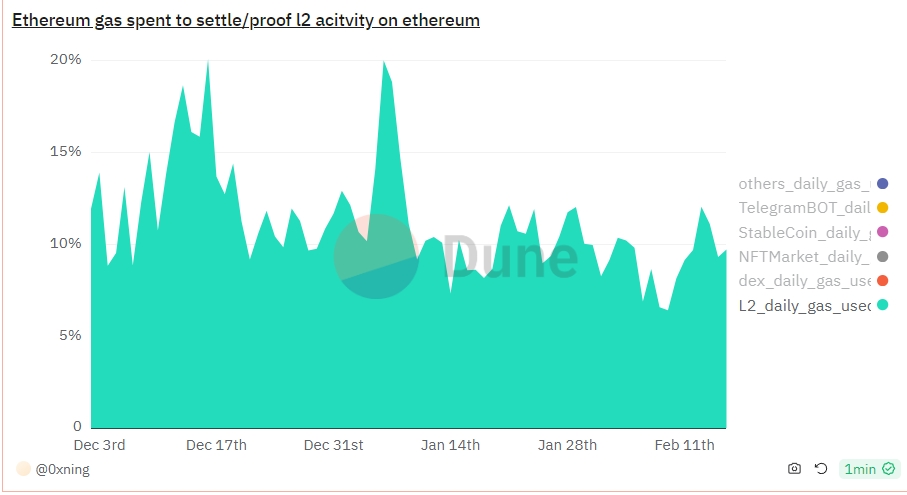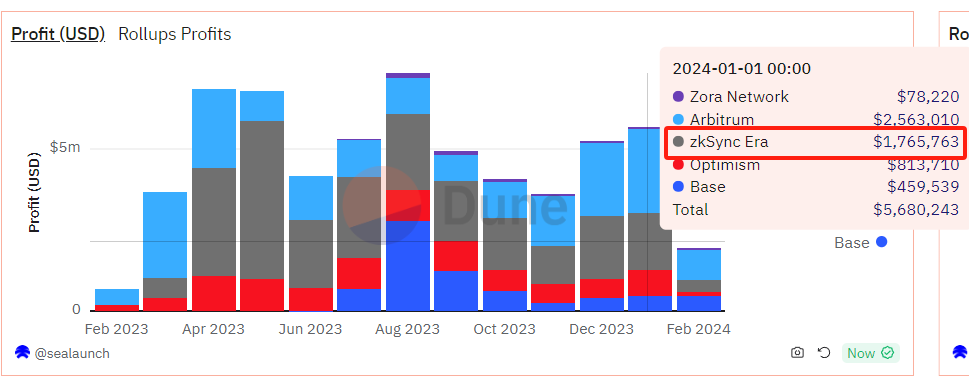
Author: NingNing, Independent Researcher Source: X,@0xNing0x
There is a consensus in today’s market: after the Cancun upgrade, the average Gas fee for Ethereum L2 will be reduced by 10 times or even higher.
After the deployment of the EIP4844, the core protocol upgraded by Cancun, the Ethereum main network will add 3 new blob spaces that specifically store L2 transactions and status data, and these blobs have independent Gas Fee markets.It is estimated that the maximum size of state data stored in one blob space is about equal to 1 main network block, that is, ~1.77M.
Currently, the daily gas consumption of Ethereum main network is 107.9b, and its Rollup L2 gas consumption accounts for ~10%.
According to the economics supply and demand curve:
Price = Total demand/Total supply
Assuming that the total Gas demand for Rollup L2 remains unchanged after the Cancun upgrade, the block space that Ethereum can sell to L2 will be changed from ~10% of the current one block to 3 complete Blob blocks, which is equivalent to the zone.The total supply of block space has expanded by 30 times, and the price of Gas will be reduced to 1/30 of the original.
But this conclusion is not reliable because it presets too many linear relationship assumptions and abstracts too many detailed factors that should be included in the calculation and consideration, especially the competition and game strategy of Rollup L2 for Blob space.Price impact.
The Gas consumption of Rollup L2 mainly consists of two parts: data availability saving fee (status data saving fee) and data availability verification fee.Among them, the data availability saving cost currently accounts for as much as ~90%.
After the Cancun upgrade, for Rollup L2, the three newly added blob blocks are equivalent to the three newly added commons.According to Coase’s commons theory, in the market environment where Ethereum Blob space is completely free to compete, there is a high probability that the current leading Rollup L2 will abuse the Blob space.This can ensure their market position on the one hand, and on the other hand, it can squeeze the survival space of competitors.
The figure below shows the profit statistics of the 1-year of the five Rollup L2 companies. It can be found that their monthly profit scale shows obvious seasonal changes, without a significant overall growth trend.
In such an inverse market with ceiling restrictions, Rollup L2 is in a state of zero-sum game that has always been highly tense, and is competing fiercely for developers, funds, users and Dapps.After the upgrade of Cancun, their fierce competition has added 3 new blob space.
In the market situation where “there is so much meat, if others eat more, you will eat less”, it is difficult for Rollup L2 to have the best ideal situation.
So how will the leading Rollup L2 abuse the Blob space?
Personally, the head Rollup L2 will modify the Batch frequency of the Sequencer, shorten the Batch that is now once every few minutes to ~12 seconds, and keep it synchronized with the blocking speed of the Ethereum main network.This not only improves the quick confirmation of transactions on your own L2, but also occupies more Blob space to suppress competitors.
Under this competitive strategy, verification fees and Batch fees in the Gas consumption structure of Rollup L2 will surge.This will limit the positive impact of the added blob space on the L2 Gas fee reduction.
The results are shown in the figure above. When the increase in Blob space has a positive impact on the reduction of L2 Gas fees, it will decrease marginally.And after reaching a certain threshold, it will almost fail.
Based on the above analysis, I personally believe that the Gas fee for Ethereum L2 will drop after the Cancun upgrade, but the decline will be lower than market expectations.











